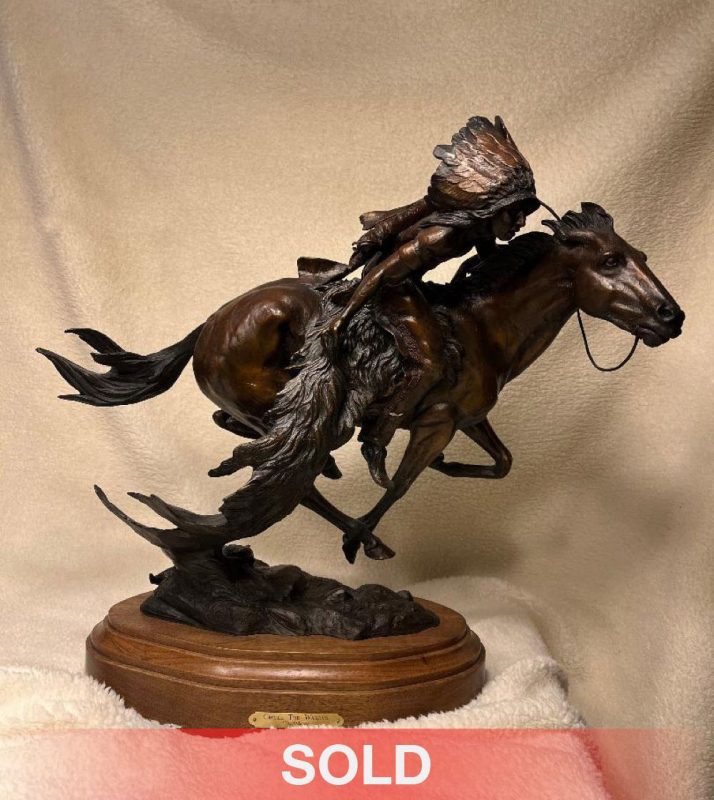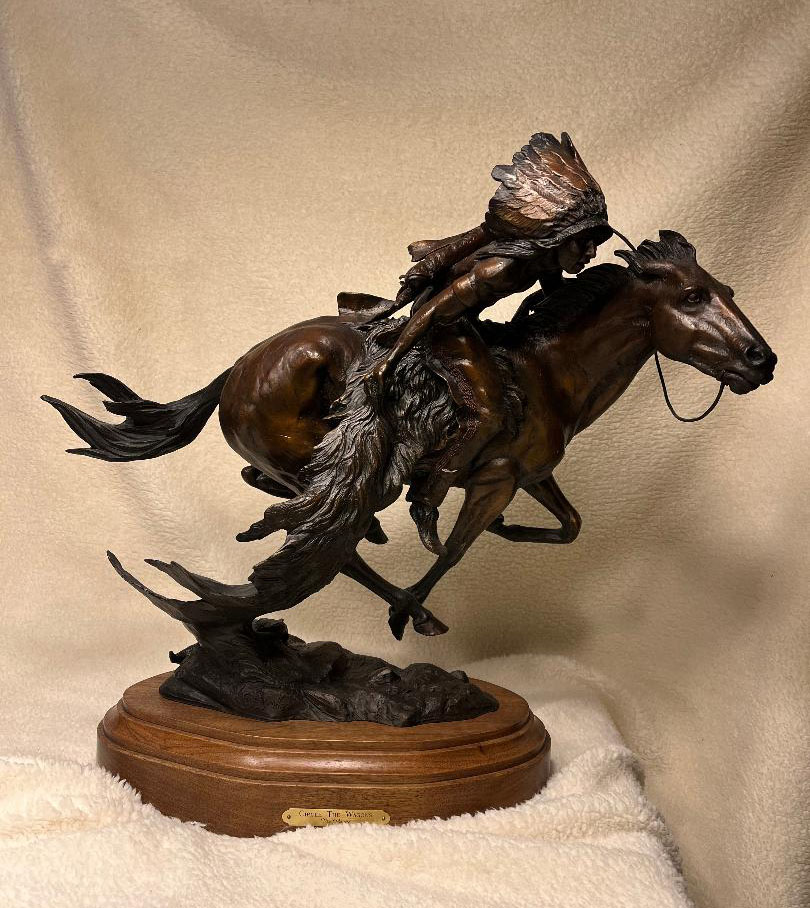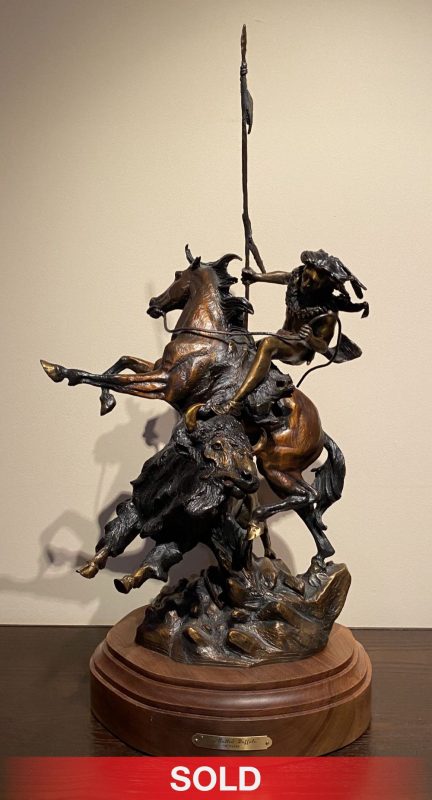Vic Payne biography:
By today’s standards, Western sculptor Vic Payne has lived a sort of cowboy life himself. When he was ten, his family moved from Dallas to a ranch in Lincoln County, New Mexico, where his father artist Ken Payne began painting full time after leaving a career as an airline and crop-dusting pilot. Young Payne thought he’d died and gone to heaven.
“All of a sudden we had horses and cows. We were forty miles from anyone. Those were the fondest days of my life no troubles in life. My dad was painting. He had this little adobe studio, and he had his library there; I’d go in there and read Will James’ book and look at pictures of paintings by Charles Russell and Frederic Remington. We didn’t have a TV; there wasn’t much else to do.”
Not long before Payne left home, his father began sculpting western figures to be cast in bronze. That inspired Payne to try his own hand at sculpture. When he was nineteen and driving a cement truck in southeastern New Mexico, his boss let him sculpt wax models while waiting in the truck between loads. It was 110 degrees in the shade, so the wax was hot and easy to work. He had his first piece cast in bronze, and his boss bought it right away for $1,500the most money Payne had seen in his life, he says. Within three years he had moved to a ranch in the hills near Cloudcroft, New Mexico, and started sculpting full time.
“I was really lucky. There were so many great people down in the oil fields who would look at my work and buy it. They liked it, but I think they were being kind. I’ve got to give those people credit for getting my career started. Some of those guys have bought one of every piece I’ve ever made. Also, my mom owned a foundry back then. She did a lot of the foundry work and helped me cast some of my first pieces. I never could have done it without her.”
Today the artist lives with his wife and four children on a 40-acre southern Colorado ranch, where his studio sits beside the Navajo River, and his pride is a steer-roping arena he designed with his 18-year-old son, Dusty. The two compete together in team-roping events at rodeos throughout the West. In the spring of 2000, they each won a saddle at a rodeo in Farmington, New Mexico.
Though Payne does some sculpting in the studio at his ranch, much of his work is done in front of an audience at his Santa Fe Gallery. Following in his father’s footsteps in another way, he learned to pilot airplanes when he was sixteen, and now flies his own small plane between his Colorado home and gallery locations he owns in Sedona, Arizona; Park City, Utah; and Jackson, Wyoming, in addition to Santa Fe.
At this point in his career, virtually everything Payne creates is sold in limited editions before its cast. With the amount of research and detail involved in works like The Long Trail Home, the sculpting process can take as long as two years.
In The Long Trail Home, Payne included many trappings that might have been found on a chuck wagon, such as a coiled rope and an axe hanging off the side, and coffeepots, cast-iron skillets and gunnysacks inside. The 9-foot-long piece captures the moment the wagon’s team descends a muddy slope to ford a raging river on the trail home from a cattle drive. A cowboy on horseback pulls at a rope attached to the wagon, helping it through. Ahead, already crossing the river, is Old Blue, a faithful Texas longhorn these cowboys have used to lead cattle drives for years.
The Long Trail Home represents a new dimension in the artist’s quest to accurately portray scenes from the bygone era. Along with sculpting human and animal figures, Payne has lately been creating painstakingly researched and constructed scale replicas of wagons, canoes and other modes of locomotion for various scenes to be cast in bronze. The chuck wagon, for example, was built from wood, with every detail of the undercarriage reproduced including wooden springs and brakes. The coffeepot was made from clay, turned on a tiny lathe and then fired to firmness; a miniature metal handle and hinges were added in exact likeness to the real thing. On the wagon are rifles, bedrolls, a wooden bucket and a tiny lantern hanging on the back looking as if it’s swinging wildly as the wagon slants toward the river.
Available sculpture:
Click on images to enlarge.

“Circle The Wagons”
Vic Payne
15″ H x 18 1/2″ W x 6″ D
bronze edition of 35
SOLD
“Boy Called Buffalo”
Vic Payne
29″ H x 15″ W x 13″ D
bronze edition of 75
SOLD
Do you have a Vic Payne sculpture you would like to sell? We have clients interested in adding his artwork to their collections. Call us 602-730-2451 or email us sales@artzline.com.
See it First!
Receive notifications from America's online art gallery when the latest works from top artists are available.




